Related Research Articles

John Williams was an English missionary, active in the South Pacific. Born at Tottenham, near London, England, he was trained as a foundry worker and mechanic.

Samuel Ajayi Crowther, was a Yoruba linguist and the first African Anglican bishop in Nigeria. Born in Osoogun, he and his family were captured by Fulani slave raiders when he was about twelve years old.

Kokoda is a station town in the Oro Province of Papua New Guinea. It is famous as the northern end of the Kokoda Track, site of the eponymous Kokoda Track campaign of World War II. In that campaign, it had strategic significance because it had the only airfield along the Track. In the decades preceding, it had been a foothills settlement near the gold fields.

The London Missionary Society was a predominantly Congregationalist missionary society formed in England in 1795 at the instigation of Welsh Congregationalist minister Dr Edward Williams working with evangelical Anglicans and various nonconformists. It was largely Reformed in outlook, with Congregational missions in Oceania, Africa, and the Americas, although there were also Presbyterians, Methodists, Baptists and various other Protestants involved. It now forms part of the Council for World Mission (CWM).
The Birmingham & District Premier Cricket League is the oldest club cricket league in the world, formed in 1888. It was the first ECB Premier League, being designated such in 1998, and is one of the strongest of the ECB Premier Leagues.

James Chalmers was a Scottish-born missionary, active in New Guinea.

Lieutenant General Sir Sydney Fairbairn Rowell, was an Australian soldier who served as Chief of the General Staff from 17 April 1950 to 15 December 1954. As Vice Chief of the General Staff from 8 January 1946 to 16 April 1950, he played a key role in the post-Second World War reorganisation of the Army, and in the 1949 Australian coal strike. However, he is best known as the commander who was dismissed in the Kokoda Track campaign.
William George Lawes was an English-born Congregationalist minister, missionary and public lecturer. He was regarded as an expert on Papua.

The Invasion of Buna–Gona, called Operation RI by the Japanese, was a military operation by Imperial Japanese forces to occupy the Buna–Gona area in the Territory of Papua during the Pacific campaign of the Second World War. The initial landings and advance on Kokoda occurred between 21 and 27 July 1942. The Japanese invaded and occupied the location in preparation for an overland attack on Port Moresby along the Kokoda Track. The landing marked the start of the Kokoda Track campaign. The landings were not directly opposed by land forces but were engaged by elements of Maroubra Force as they advanced on Kokoda. This initially included B Company of the 39th Battalion, patrols of the Papuan Infantry Battalion (PIB) operating in the area and a small number of the Australian New Guinea Administrative Unit (ANGAU) that became attached to the force. The Australians were initially repulsed near Oivi but subsequently regrouped to defend Kokoda in an initial battle there from 28–29 July.
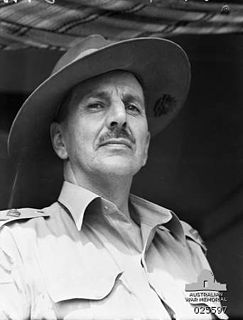
Major General Basil Moorhouse Morris, was an Australian Army officer. He served in both the First and Second World Wars. In 1942, he was the Australian military administrator at Port Moresby at the start of the Imperial Japanese advance along the Kokoda Track after the invasion of Buna-Gona and successfully delayed the Japanese advance until units of the Second Australian Imperial Force arrived.

William Wyatt Gill was an English missionary, active in Australia and the South Pacific region after 1851.

Major General Colin Hall Simpson, was an Australian Army officer who rose to the rank of major general as Signal Officer in Chief during the Second World War. He was one of the founders of Amcal, the largest retail pharmacy chain in Australia.

Frederick Stanley Arnot was a Scottish missionary who did much to establish missions in what are now Angola, Zambia and the Democratic Republic of the Congo (DRC).
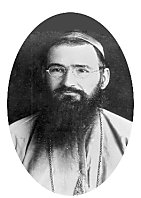
Antonin Guillermain was a Catholic missionary who was Vicar Apostolic of Northern Nyanza in what is now Uganda from January 1895 until his death in July 1896.

Goaribari is an island in southern Papua New Guinea. It is located in Gulf Province within the Gulf of Papua. During high tides, parts of the island are inundated. The vegetation is thick rainforest.
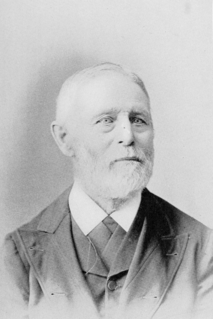
Cushing Eells was an American Congregational church missionary, farmer and teacher on the Pacific coast of America in what are now the states of Oregon and Washington. His first mission in Washington State was unsuccessful. Eells and his family had to leave after the Native Americans massacred a group of neighboring missionaries. They spent the next fourteen years farming and teaching in Oregon, before returning to Washington, where Eells founded a seminary that later became the Whitman College. Eells continued to teach and preach in Washington for the remainder of his life.
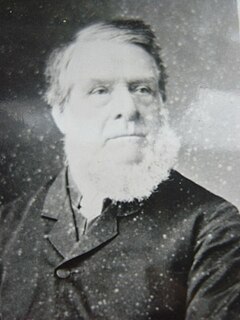
James Sibree (1836–1929) was an English missionary in Madagascar with an interest in the natural history and cultural history of the island. He was a contemporary of the French naturalist Alfred Grandidier and wrote detailed books about the flora and fauna of Madagascar, the country's general history, and the mission history on the island. He also helped revise the Malagasy Bible and wrote several works in the Malagasy language. He was a vocal advocate of Malagasy independence prior to the French invasion of Madagascar in 1895. Sibree also designed and helped build almost 100 new mission buildings and 50 churches in Madagascar. He was a fellow of the Royal Geographical Society and earned an honorary degree from the University of St Andrews. Swiss zoologist Charles Immanuel Forsyth Major named Sibree's dwarf lemur after him in 1896.
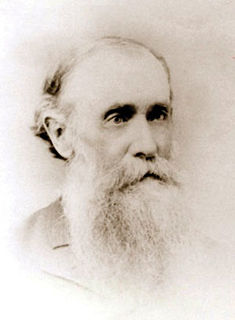
John I. Tay was a Seventh-day Adventist missionary who was known for his pioneering work in the South Pacific. It was through his efforts that most of the inhabitants of Pitcairn Island were converted to Adventism, and that the General Conference of Seventh-day Adventists purchased the Pitcairn schooner for missionary work in the South Pacific.
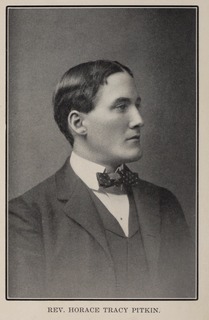
Horace Tracy Pitkin (1869–1900) was a missionary of the American Board of Commissioners for Foreign Missions who was killed in China during the Boxer Uprising in 1900. Yale China Mission,, was founded in his memory.

Sir Percy Chatterton was an English-born Papua New Guinean educator, clergyman and politician. He served as a member of the House of Assembly from 1964 to 1972.
References
- ↑ "Rev Harry Moore Dauncey (Biographical details)". British Museum. Retrieved 29 December 2016.
- ↑ Whitehouse 1896, p. 305.
- ↑ Jacobs, Knowles & Wingfield 2014, p. 67.
- ↑ Goldman 1999, p. 19.
- ↑ Congregational Union of England and Wales 1933, p. 220.
Attribution

Bibliography
- Congregational Union of England and Wales (1933). The Congregational Year Book. Congregational Union of England and Wales.CS1 maint: ref=harv (link)
- Goldman, Laurence (1999). The Anthropology of Cannibalism. Greenwood Publishing Group. ISBN 978-0-89789-597-2.CS1 maint: ref=harv (link)
- Jacobs, Karen; Knowles, Chantal; Wingfield, Chris (15 December 2014). Trophies, Relics and Curios?: Missionary Heritage from Africa and the Pacific. Sidestone Press. ISBN 978-90-8890-271-0.CS1 maint: ref=harv (link)
- Whitehouse, John Owen (1896). Register of Missionaries, Deputations, Etc., from 1796 to 1896 (Public domain ed.). London Missionary Society.CS1 maint: ref=harv (link)